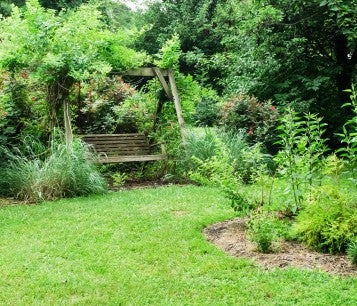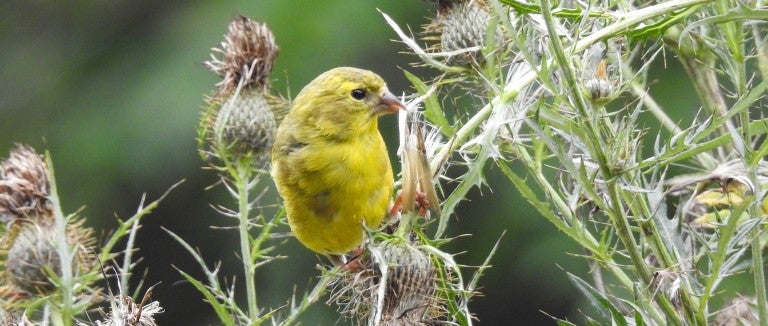I’m a bird lover with an aversion to bird feeders. That sentiment tends to ruffle feathers, especially in Western countries where more than half of all households contribute to a multibillion-dollar bird feeding industry. But in light of the potential harm caused by indiscriminate feeding, it’s probably time for some uncomfortable discussions.
Globally, supplemental feeding is the most common way humans interact with wild animals. It also leads to significant conflict. Though many of us consider bird feeding a benign way to connect with nature, it often exacerbates an already pervasive cultural bias that favors birds over practically any other animal who visits the buffet. I’ve met people who claim to love wildlife but shoot squirrels, trap raccoons and poison mice and rats who don’t know that the snacks aren’t meant for them.
Just as concerning are the ripple effects spiraling beyond our backyards and into broader ecosystems, sometimes negatively impacting birds themselves. Feeders draw unnatural concentrations of multiple species, encouraging disease transmission. They act as bait, alerting songbirds’ predators to unusually high densities of prey. They’ve changed migration patterns for blackcap warblers in Europe and have likely helped expand winter ranges for hummingbirds, cardinals and Carolina wrens in the U.S. They’ve led to population explosions among some feeder-loving species like great tits and blue tits in the UK—which sounds positive until you learn about the losers in that numbers game: less dominant woodland species that fare poorly against increased competition for food and nesting habitat.
If you really care about these animals and if you really want to help them, you’ve got to go deeper. You’ve got to understand them and understand what you’re doing that may cause them harm.
John Griffin, The HSUS
The news isn’t all bad. Supplemental food can help individual birds through increased fitness, survival rates and reproductive success. But less time has been spent exploring the flip sides: What happens when formerly migrating birds stay and compete for resources with longtime winter residents? What’s the environmental cost of growing seed in monocultures and shipping it to distant places, and how do those industrial crops affect birds native to the lands where they grow? (Here in the U.S., blackbirds are hazed and sometimes killed for eating sunflower seed crops.)
Such open questions merit “urgent empirical research,” write Alexander Lees and Jack Shutt of Manchester Metropolitan University in England in a paper called “Killing with Kindness,” adding that evidence exists to warrant reduction of feeding near core habitats of sensitive species in the UK. They suggest invoking the precautionary principle and taking action before it’s too late. That’s similar to the “first, do no harm” approach to bird feeding that biologists at the Humane Society of the United States have long advocated: If an outbreak of salmonellosis or trichomoniasis is detected among birds in your region, remove feeders temporarily and disinfect your birdbaths. If you live in bear country, stop feeding birds altogether—a recommendation that some local governments make too. And if you do decide to feed birds, follow best practices for feeder placement, food selection and prevention of spillage that attracts other animals and increases potential for conflicts.

The most thoughtful approach is to learn about birds and their habitat, says John Griffin, HSUS senior director of urban wildlife programs. What plants do they eat? Where do they nest? “If you really care about these animals and if you really want to help them, you’ve got to go deeper,” he says. “You’ve got to understand them and understand what you’re doing that may cause them harm. Learning more about the animals in your yard can also turn wildlife-watching into a more joyful and enlightening experience.”
In the backyard of their townhome, where development supplants natural lands, Griffin’s family puts up a feeder, but only as a supplement to their native plant garden. Many people treat feeders as replacements for habitat, hanging them in yards dominated by lawn—akin to building a house with a kitchen but no walls. Without plants, birds have no protection from weather and predators, no place to nest and rest, and few insects and spiders for their young, most of whom can’t survive without arthropods in their diets.
A humane backyard is a natural habitat offering wildlife plenty of food, water and cover, plus a safe place to live free from pesticides, chemicals, free-roaming pets, inhumane practices and other threats. And it's so easy to build!

Lack of natural habitat also makes for poor wildlife-watching. “You really just don’t realize how empty your yard is until you fill it up with wildflowers and see all the different kinds of bees and butterflies and interesting insects,” says writer Asher Elbein, whose research for a Scientific American article on the impacts of bird feeding encouraged him to continue adding habitat outside his Austin, Texas, rental home. Even balconies, patios and small spaces like Elbein’s can become wildlife oases. An “accomplished scavenger,” Elbein gathers fallen leaves and dead wood so juncos and other birds can forage, fills planters with seeds of native wildflowers that hummingbirds visit, and turns buckets into fountains for all the animals. “Once you learn to stop seeing the only worthwhile nature and wildlife as the birds at your feeder,” Elbein says, “you get a much healthier yard and, frankly, a much more interesting yard.”
Though bird feeders are often touted as a way to engage with nature, it was the lack of one that inspired me to create an oasis. After seeing sparrows devour seedheads of switchgrass one winter, I thought about how many more birds I could help. Twenty years later, we have thousands of bird feeders—in the form of native thistles where goldfinches flock, fallen leaves where northern flickers drill for ants, maple trees that brown creepers scale to find insects beneath the bark, and coral honeysuckles, columbines and red buckeyes to greet hummingbirds each spring. For these birds and other wildlife in our sanctuary, it’s the native plants—not feeders filled with nonnative seed from faraway places—that say, “Welcome home.”
Want more content like this?
This was written and produced by the team behind All Animals, our award-winning magazine. Each issue is packed with inspiring stories about how we are changing the world for animals together.
Learn MoreSubscribe
